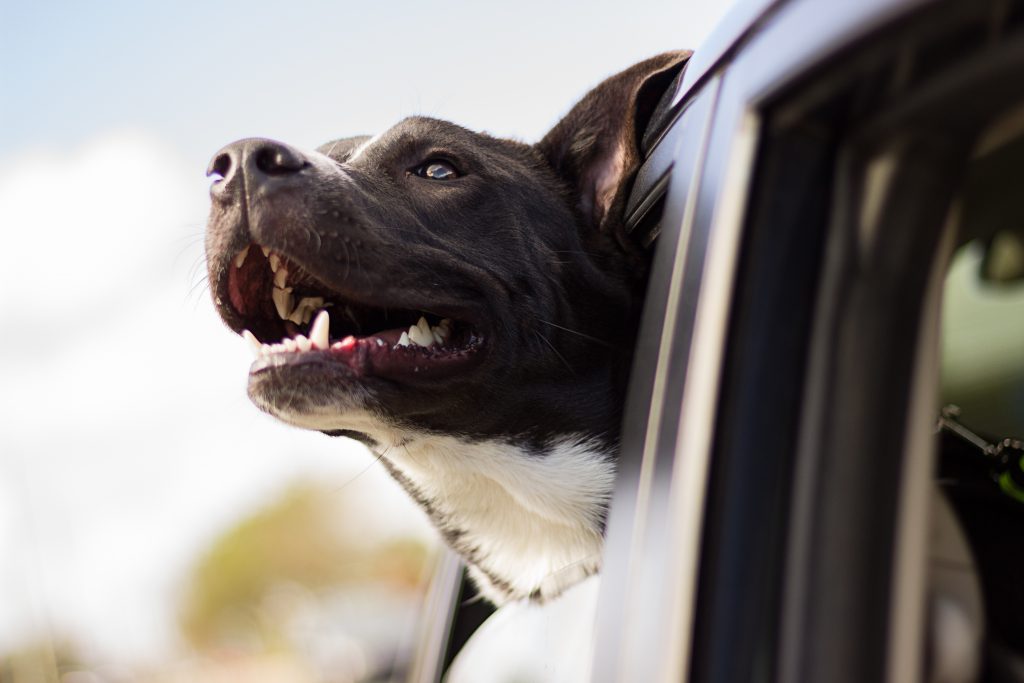Summer may be over, so you’ve probably already put to rest the idea of jetting off to a remote beach anytime soon. But this doesn’t mean you have to reign in your wanderlust! Autumn brings to mind many things: long walks, crisp air, pumpkin-spiced-everything, and crispy leaves. Which means it might just be the perfect time to hit the road and take an autumn road trip. If you’ve got your dog in tow, those long walks will only be that much sweeter. Speaking from experience, taking a dog on a road trip is quite literally no walk in the park, so try my advice for making sure your trip goes off without a hitch.

Build up to a Longer Trip
Most dogs aren’t accustomed to being in the car for very long, and anything longer than a trip to the vet or dog groomer might make them anxious. Slowly build up their time in the car and keep a close eye on their behaviour. If they get car sick, speak to your vet about getting a prescription for doggy Dramamine. Try to feed your dog a few hours before the trip and make sure they’ve been to the bathroom.
Make sure your Pup is Comfy
Giving your dog a dedicated space in the car will help them to feel safe and secure, and they’ll also start to associate being in the car with good memories. Start with a blanket to keep your seats free from muddy paw prints, then add a specialist dog seat belt if your pet will be sitting in the back seat. Your dog will be most comfortable wearing a harness, and less likely to wiggle free. If your dog will be in the boot, you can also give him a spill-proof water bowl. Keeping a window open a smidge will help you keep your pet cool, and you might also need a window shade for when the low winter sun is shining.
Plan, Plan and then Plan Some More
If you’re planning to stay overnight in a hotel, or even a campsite, you’ll need to make sure they are pet-friendly. Some hotels might be attached to a pet-friendly restaurant, but not allow pets in the rooms, so it’s always best to check in advance. You’ll also need to plan more rest stops than usual to allow your four-legged friend a chance to stretch his legs, have a drink of water and use the bathroom.
Update His Microchip Details
Dog microchipping is now compulsory in the UK, but it’s also important to make sure your dog’s microchip details are up-to-date regardless of which country you are in. If your dog is microchipped, a quick scan with a microchip scanner will reveal your contact details. Many pets are left unclaimed every year because the microchip details are out of date. You should also make sure your dog has a secondary form of ID, such as a phone number on his collar. Just try to avoid a dangling tag, as these can easily break off if your dog makes a run for it through some bushes.
Safety First
Dogs are notorious for getting themselves in trouble then they are in unfamiliar territory. From scratches and scrapes to irritated eyes and even ticks, you’ll need to make sure you carry a specialist doggy first aid kit to cope with his mishaps. Tick tweezers, gauze, bandages, saline solutions and antiseptic wipes will help you deal with any emergencies before you can get him checked at the vet.

